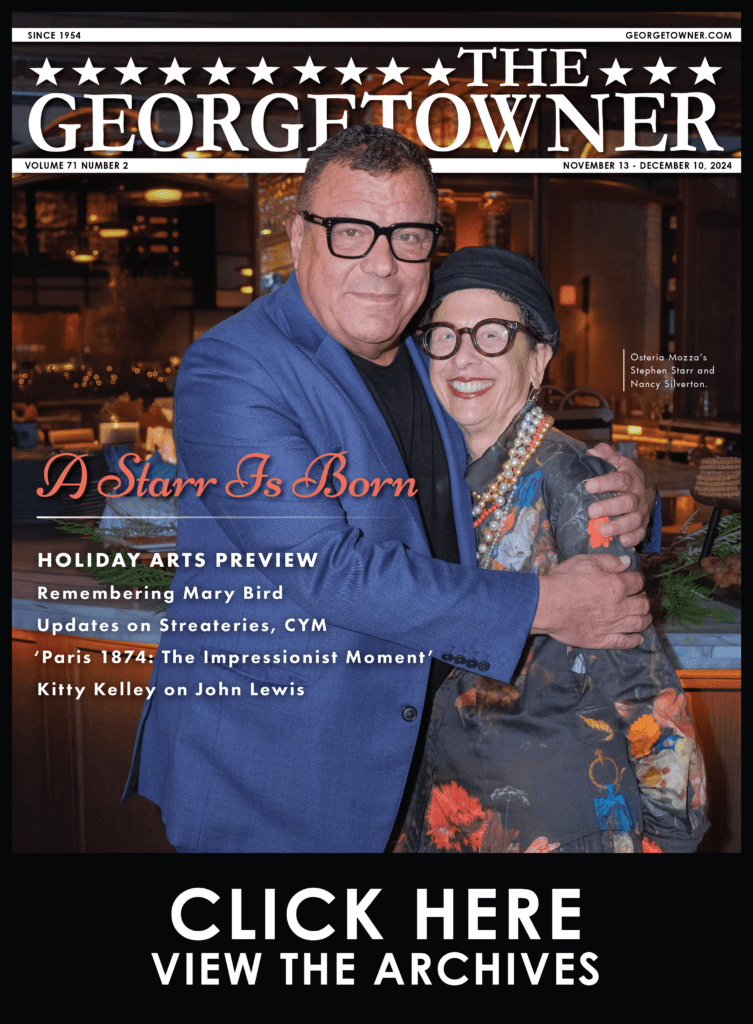The Beautiful Schools of Washington, D.C.
By • September 28, 2017 One Comment 1334

The District’s history of building and promoting public schools has had surprising peaks and troughs over the past 150 years. While the scholastic status of D.C. schools has often been at the bottom of the list of states, there were also times when Washington schools led the nation in academics as well as aesthetics. For example, from 1890 to 1930, the District had the best public schools in the country for black students.
As a reminder, public schools in the United States were racially segregated until the 1950s, with separate black schools and white schools until 1954, when the District became the first city in the country to desegregate its schools.
In 1868, one of the foremost schools in the country to promote the advancement of black students was the Thaddeus Stevens School at 1050 21st St. NW. A handsome structure, it was the finest school of its kind for that time, producing graduates including singer Roberta Flack and surgeon Charles Drew. It captured public attention again in the 1970s for a different reason: in an unprecedented move, President Jimmy Carter sent his daughter Amy there, since it was the neighborhood public school for 1600 Pennsylvania Ave.
The District’s early commitment to building aesthetically pleasing schools ran from the mid-1800s right up to the 1940s. It probably peaked at the turn of the last century during the City Beautiful movement. In the early 1900s, many famous architects came to Washington to design mansions for the boom-time millionaires lobbying Congress to pass legislation favorable to their businesses.
In addition, the McMillan Commission was following through on L’Enfant’s plan for the nation’s capital, adding monuments and parks to complete his grand design. There was a lot of talent in Washington, and these architects got commissions to build schools as well as homes.
There were so many beautiful schools built here in the 19th century that Washington, D.C., won a prize for its public-school architecture at the 1893 World Exposition in Vienna, Austria. Some of the finest buildings included the Wallach School at 7th and D Streets SE (since demolished), Franklin School at 13th and K Streets NW, Sumner School at 17th and M Streets NW and Jefferson School at 801 7th St. NW, all built between 1864 and 1872.
By 1874, the Office of Building Inspectors was established to approve school construction. It quickly approved a whole series of handsome redbrick schools in the general style of Romanesque Revival.
By the 1900s, there was an added emphasis on comfort as well as beauty, with the addition of better heating and ventilation, laboratories, gymnasiums and even swimming pools. In 1909, the District appointed its first municipal architect, Snowden Ashford, and he designed the beautiful Eastern High School on East Capital Street NE, Dunbar High School (since demolished) and the stately Central High School, now Cardozo High School.
There were so many beautiful schools built here in the 19th century that Washington, D.C., won a prize for its public-school architecture at the 1893 World Exposition in Vienna, Austria. Some of the finest buildings included the Wallach School at 7th and D Streets SE, Franklin School at 13th and K Streets NW, Sumner School at 17th and M Streets NW and Jefferson School at 801 7th St. NW, all built between 1864 and 1872.
Most of these schools were built for white students. When whites began leaving the city for the suburbs between 1930 and 1950, the D.C. population became predominantly black
— leaving the black schools overcrowded and underfunded and the white schools almost empty. The situation got worse before it got better.
In 1954, desegregation meant that black students were able to use all the schools. The system was hardly desegregated, however, since the bulk of the remaining white population responded by fleeing the city for the suburbs.
Many of these historic buildings are still in use, and the reincarnation of one such storied school, Thaddeus Stevens, is underway. The fate of this shuttered school has been through many twists and turns in recent years. First it was going to go condo, then it was going to be a school for special-needs children, a plan that was approved by the neighborhood but never came to fruition.
Currently it is slated to become an extension of the School Without Walls, to be used as a learning center for infant and toddler development — a proposal eagerly anticipated in this popular urban neighborhood of condos, townhouses and families with babies and young children. It will be good to see the doors of this grand old school building in use and open to the public again.
Donna Evers is the owner of the largest woman-owned and woman-run real estate firm in the Washington metro area, the proprietor of Twin Oaks Tavern Winery in Bluemont, Virginia, and a devoted student of Washington-area history. Reach her at devers@eversco.com.


Thanks for shining a light on DC Public School buildings, some of the finest school buildings in the nation. The Sumner School at 17th and M Streets NW has housed the DC Public Schools Museum and Archives since 1986. Visit the Museum Monday through Friday from 9am until 5pm. If you would like to research in the Archives, email info.sumnerschool@dc.gov to schedule an appointment.